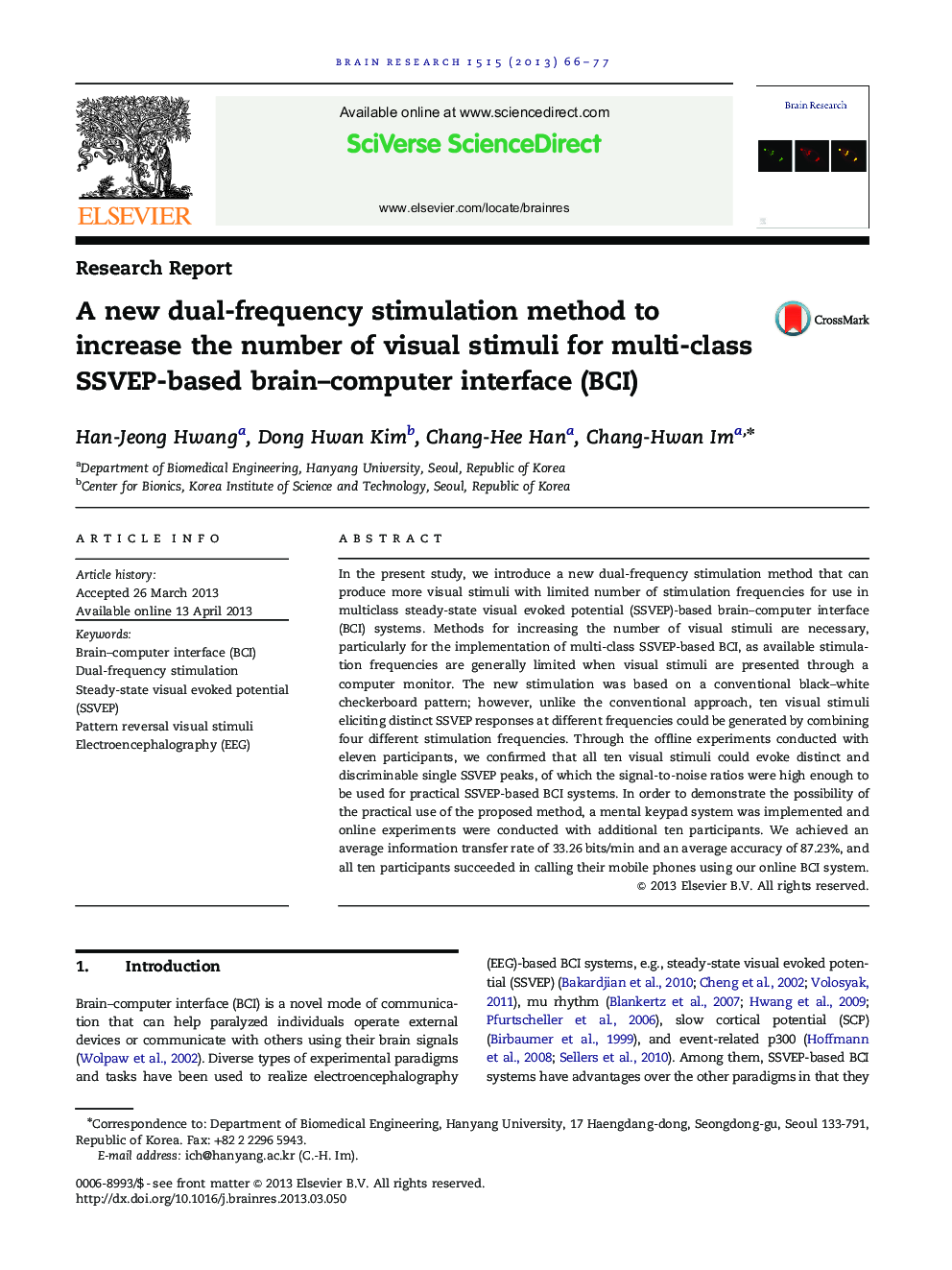| کد مقاله | کد نشریه | سال انتشار | مقاله انگلیسی | نسخه تمام متن |
|---|---|---|---|---|
| 4324642 | 1613924 | 2013 | 12 صفحه PDF | دانلود رایگان |

• We proposed a new dual-frequency stimulation method to address ‘attention-shift’ issue.
• A conventional pattern-reversal checkerboard visual stimulus was modulated with two different frequencies.
• Ten visual stimuli eliciting distinct SSVEPs were generated using only four frequencies.
• An online keypad system was implemented using the proposed visual stimuli.
• Online experiments showed average ITR of 33.26 bits/min and average accuracy of 87.23%.
In the present study, we introduce a new dual-frequency stimulation method that can produce more visual stimuli with limited number of stimulation frequencies for use in multiclass steady-state visual evoked potential (SSVEP)-based brain–computer interface (BCI) systems. Methods for increasing the number of visual stimuli are necessary, particularly for the implementation of multi-class SSVEP-based BCI, as available stimulation frequencies are generally limited when visual stimuli are presented through a computer monitor. The new stimulation was based on a conventional black–white checkerboard pattern; however, unlike the conventional approach, ten visual stimuli eliciting distinct SSVEP responses at different frequencies could be generated by combining four different stimulation frequencies. Through the offline experiments conducted with eleven participants, we confirmed that all ten visual stimuli could evoke distinct and discriminable single SSVEP peaks, of which the signal-to-noise ratios were high enough to be used for practical SSVEP-based BCI systems. In order to demonstrate the possibility of the practical use of the proposed method, a mental keypad system was implemented and online experiments were conducted with additional ten participants. We achieved an average information transfer rate of 33.26 bits/min and an average accuracy of 87.23%, and all ten participants succeeded in calling their mobile phones using our online BCI system.
Journal: Brain Research - Volume 1515, 17 June 2013, Pages 66–77